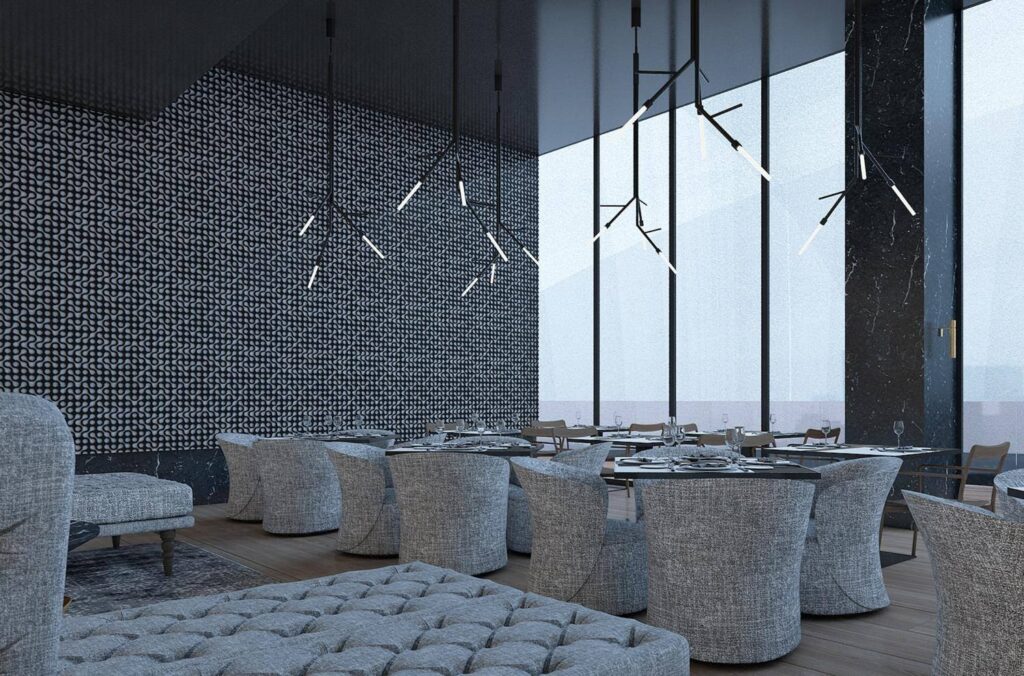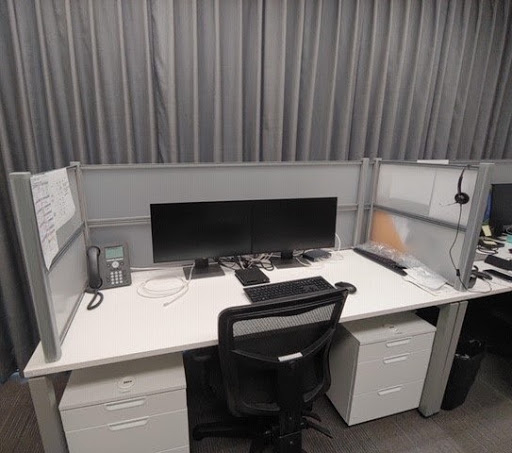
Table of Contents:
Industrial buildings and workshops have unique noise protection requirements. On the other hand, the work noise generated there can result in lost productivity and increased employee disease. At the same time, on the other side, it can become a major annoyance for the surrounding environment. We provide cost-effective solutions for industrial soundproofing, echo insulation, industrial building acoustics, and industrial noise control, among other applications.
As is well known, industrial halls do not necessarily have the best acoustics, and hall construction and noise control do not always coexist together. Due to the prevalence of noisy machines and workplaces in industrial buildings and workshops, on-the-job soundproofing is critical. The criteria for safeguarding employee noise are more precisely defined in the Noise and Vibration Regulation or noise-related workplace law. Therefore, should explicitly plan workshop noise reduction, industrial sound dampening, and industrial noise protection during construction in production buildings and furnishing workshops that adhere to the requirements of the workplace legislation for noise. If an existing workshop's noise control measures are insufficient, they can be retrofitted; for example, retrofitting a steel structure with insulation.
Controlling noise in buildings
In workshops and industrial facilities, the primary sources of disturbance are reverberation and sound pressure levels. Typically, a steel hall lacks good acoustic qualities. Echo occurs when sound bounces off of hard surfaces. Simultaneously, the overlapping of sound waves results in an endless amount of noise. The sound pressure level is a measurement of the loudness of the sound. It lasts longer, the more significant it is until the sound waves die away. Thus, noise control in industrial buildings is primarily concerned with lowering the sound pressure level and shortening reverberation times through appropriate methods. Noise may be reduced to acceptable levels, enhancing both internal and outdoor noise control by utilizing the numerous soundproofing solutions for industrial buildings.
Due to the vast dimensions involved in building construction, soundproofing is a challenging task. An option is available in the form of sound-absorbing material designed for industrial use. These absorb the sound waves generated by manufacturing noise, preventing their uninhibited dispersion and refraction. They are typically used in one of two ways. Noise sources can be acoustically isolated, preventing noise from spreading throughout the building; conversely. Our sound absorbers can provide complete industrial hall insulation, production hall dampening, and sound insulation for industrial facilities or production buildings.
Numerous workshops and production facilities are located near residential areas. It is also critical to soundproof workplaces against departing noise to avoid disturbing tenants. Our noise-absorbing cushions can assist in limiting the noise to the authorized level. Absorber pads can be adhered directly to a ceiling or wall using a self-adhesive layer, or they can be tastefully connected using anodized aluminum hanging installation cartridges. If the ceilings are high, hanging installation cartridges are strung directly above the machinery or equipment, as absorbers would be ineffective at such a distance from the acoustic source. This reduces the distance to the sound source and significantly reduces sound dispersion within the space, greatly enhancing the industrial building's noise protection.
Our vertically hung sound absorbers are particularly well-suited to rented spaces where gluing is not permitted. The installation mechanism is suspended from the ceiling through tension wires in this example. As a result, floor stands and stand constructions are superfluous. This not only saves space but also prevents injuries caused by stumbling over floor impediments.
Our acoustic foam can also be used to insulate sound in industrial structures. This is a fire-resistant material. However, it is not waterproof. It will not ignite even when exposed directly to flame, allowing for safe industrial hall soundproofing and noise protection by the Labour Protection Act, even in facilities with stringent fire protection regulations.
Whoever wishes to establish a workshop must also offer enough sound insulation. Workshops are frequently located adjacent to or between dwellings. The machinery employed here is often smaller than those found in industrial facilities, but they are commonly located closer to residential areas. Common Sound-reduction pads can be used in various devices and machinery to reduce noise, thereby minimizing distracting external sounds and safeguarding personnel from noise by the Occupational Health and Safety Act. They are a perfect alternative for soundproofing the workshop due to their high effectiveness, dirt resistance, and longevity.
Noise Control in Industry
Generally, industrial noise control entails replacing noisy machinery or equipment with quieter alternatives. For instance, the noise generated by an air fan can be lowered by increasing the number of blades or their pitch while decreasing the rotational speed, resulting in the same amount of airflow. Industrial noise can also be reduced by interfering with its course; for example, a noisy engine can be insulated.
A form of noise reduction frequently employed in the industry is providing hearing protection devices to workers. These devices must provide adequate noise attenuation to safeguard against projected exposures but not impair workers' ability to hear human speech and warning signals.
Noise Isolation
The process of preventing sound from flowing from one place to another is called sound or noise blocking. Attenuating sound with acoustical materials is straightforward in theory. However, it can quickly become complicated when faced with the pressure of meeting and exceeding specified sound reduction levels involving multiple noise sources and equipment, multiple sound reverberation surfaces, and varying environmental conditions. Mass or weight is critical for noise reduction or noise containment—adding for acoustical absorption to the sound blocking barrier's noise source side results in a superior noise reduction material.
The following are some factors to consider when developing a noise-cancelling system using soundproofing products.
- the height of the source of noise
- how close the noise reduction materials can be placed to the source of the noise
- the distance between the source of noise and the noise receiver
- the noise's current decibel level
- your objective of sound isolation
- Acoustic Barrier Wall Surrounding the Chiller
All of these considerations must be examined before installing a sound-blocking noise mitigation system.
Concrete, steel, wood, or any material with mass or significant weight, such as drywall, plywood, concrete block, sheet steel, assembly-loaded vinyl, or lead, are excellent acoustical materials for suppressing sound.
Typically, any noise control application has a list of limitations that must be met.
- How accessible is the interior of the sound enclosure?
- How much airflow is required to cool the noise containment system's equipment?
- Is a roof needed to achieve my attenuation goal?
- If a roof is necessary, what are the fire suppression and illumination requirements?
